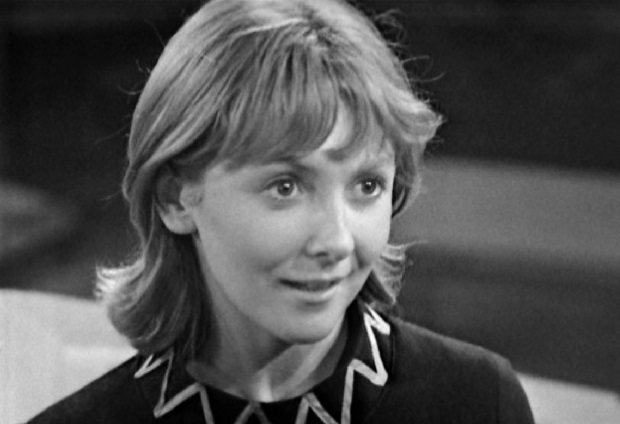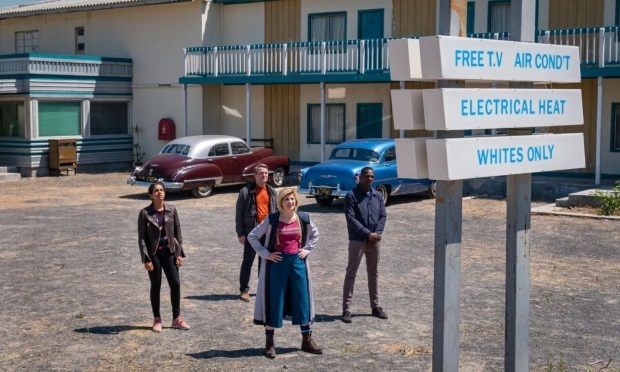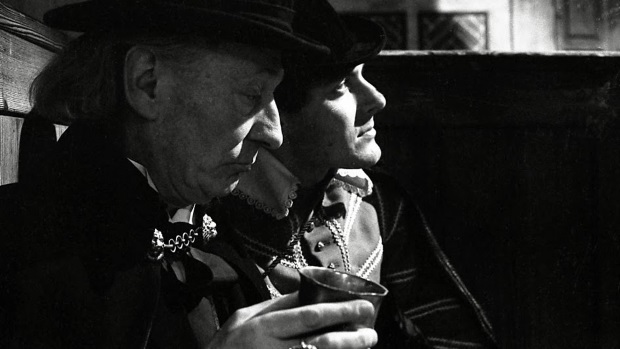Doctor Who series 11’s Classic Who influences
Which lessons might Doctor Who series 11 have learned from Classic Who? Andrew considers some of the similarities between now and then...
Doctor Who series eleven has echoed aspects of the show from the early sixties and eighties, specifically with its three companions, near pure-historicals, grisly bouts of violence and cynical characters. What has it learned from these eras?
Until the end of its second series, Doctor Who featured three companions, and briefly did so again in its fourth and nineteenth series. However in those cases Jamie and Nyssa’s status as companions wasn’t confirmed late in the day, with the following stories being hastily rewritten to accommodate them. In 1983 Doctor Who briefly returned to stories planned for three companions for eight weeks, but wouldn’t feature three regular companions travelling in the TARDIS again until 2018.
Part of the original reasoning for three companions was multi-generational appeal. Doctor Who was designed for a family audience, and so we had the elderly Doctor with his teenage granddaughter accompanied by thirty-something teachers Ian and Barbara. The current cast are of similar ages to the original line-up, although the Doctor is no longer the oldest person there (sorry Bradley, you’re looking fine). Nonetheless, it displays a similar canny knack for looking at a prospective audience and seeking to provide identification figures.
A problem with this is that three regular companions rarely works, because one of them always has to have less to do.
With the original line-up, Ian and Barbara had interesting storylines and their characters developed along with the Doctor’s. The problem of Susan was that she did not, and was more regularly reduced to the role of peril magnet, getting into trouble and then screaming about it. Actress Carole Ann Ford grew frustrated and left early on in season two. Vicki, played by Maureen O’Brien, fulfilled the same audience identification role but was a more lively and engaging presence.

What this demonstrates is that it’s hard to develop four main characters simultaneously, even if you have twice as much screen time to do so (the current series will be 510 – 520 minutes long, compared to season one being roughly 1150 minutes). Vicki was brought in with Ian, Barbara and the Doctor already established, meaning the series was free to give her more to do. In season nineteen, the reduced number of episodes brought the series length nearer to the current format (650 minutes in total), and the late addition of Nyssa to the roster of companions led producer John Nathan-Turner to decide that three companions was too many.
This makes the decision to return to three regular companions an ambitious one. Doctor Who invests much more time in its characterisation nowadays, but for the most part has less screen time to do this in than during its original run. True, Chris Chibnall’s reputation is for character-led drama, but it’s worth noting that any recent attempt to have a three or more recurring characters usually allows for two regulars and others guest starring in sporadic episodes. So it’s not a total shock to find, with series eleven, that the actors are having to do a lot of heavy lifting.
Bradley Walsh’s Graham has been given the most substantial character work. Tosin Cole’s Ryan is also getting a bit to do due to his relationship with Graham, but Yaz’s characterisation has so far been sparse. Fortunately, Team TARDIS are a charismatic bunch, but Yaz has suffered in the crowded cast. At the time of writing there’s still time to develop her, but it wouldn’t be a surprise if this wasn’t done until series twelve and the other characters are more established. History suggests this is likely.
History also suggests that people aren’t that fond of history, at least not compared with bug eyed monsters.
Series eleven has tested this notion, with particular acclaim given to Rosa, an episode featuring only humanoid aliens and few science fiction or fantasy elements. Demons Of The Punjab featured some monstrous looking aliens who turned out to be benign red herrings. The plot was driven by humans. The Witchfinders returned to more traditional pseudo-historical ‘it was aliens what did it’ trappings.

None of these are “pure historicals” – stories in which the Doctor and her companions are the only science fiction element – but they’re as close as you can imagine Doctor Who getting to it again, with the historical events depicted moving away from more famous people and places to less well known ones, necessitating more exposition and educational content to bring the audience up to speed.
Like three companions, pure historicals were phased out in the sixties and briefly revisited in the eighties. Part of the show’s original educational remit, they fell out of favour as production teams changed and preferred adventure stories with monstrous antagonists.
Historical settings became useful for juxtaposition of connected monstrous imagery (e.g. the armoured Sontarans in medieval England, or The Visitation’s Grim Reaper robot), and dilemmas about changing history were used in other kinds of stories, but Doctor Who was known as the scary show with monsters. It was not the scary show in which the Doctor fails to prevent the Huguenot Massacre because he daren’t contradict the timeline.
Fans of the darker hues of Who appreciated this approach, and in the example above The Massacre Of St Bartholomew’s Eve followed the death and destruction of The Dalek Master Plan. This culminated in a pay off at the end of The Massacre as the Doctor’s companion takes him to task for not preventing the carnage, leaving the Doctor alone to lament that none of his friends can see his point of view, and that the only people who possibly could are on the home planet he can never return to. It currently feels unlikely that the Thirteenth Doctor will be in a similar situation.

Before series eleven, the advent of a friendlier, more child-like Doctor and promise of a more accessible show meant that this writer was not expecting a slow and death-filled journey across nighttime Sheffield in pursuit of a corpse-desecrating villain who sticks teeth in his face. As with Eric Saward – Script Editor between 1982 and 1986 – there is an element of additional sadism present, and the characters of Epzo and Krasko feel like they could have walked straight out of season twenty-two’s nastier, cynical universe.
Saward’s time on the show brought us gooey disintegrations, melting faces and a somewhat more successful attempt at a human Dalek. He frequently struggled to find the dramatic justification for some of his stories’ gratuitous violence. You expect characters to die in Doctor Who, but usually the more horrible the death the more is left to the imagination. There is no need to show someone’s skin bubbling as they’re burned alive, we understand that character is going to die anyway. Likewise, with Tim Shaw in The Woman Who Fell To Earth, it isn’t necessary to include the teeth aspect as the audience already understands they’re a scary alien.
In this case, though, something has been learned from the past. The mutilation of dead people isn’t dwelt on as much, and is used to ramp up the unease and creepiness of the villain. It isn’t merely there to shock.
It’s worth noting that just because there are similarities doesn’t necessarily mean there’s an influence. Doctor Who is not the only show in the world. However, it doesn’t mean you can’t look at what’s worked or failed before and react to it; either taking something that worked or tweaking something that didn’t. Series eleven has brought a new mix of old ideas, and future series will learn from its mistakes and successes.
